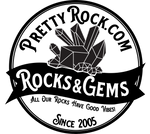How to Use a Loupe



A loupe is a small handheld magnifying glass used to see into the interior of a stone. They come in different strengths, with the most common being 10x. Gemologists use loupes to help determine a stone's identity. Faceters use loupes to see inclusions or flaws to help them decide how best to cut a stone. At a gem show, using a loupe incorrectly can mark you as a newbie. I have seen unscrupulous dealer's eyes light up when they see someone using a loupe the wrong way. Getting adept with a loupe takes a little practice, but I am sure you will be handling one like a pro in no time!
- Step 1: Find a comfortable chair at a desk or table near a strong indirect light source for viewing the gemstone or gem rough.
- Step 2: Hold the stone in a pair of tweezers or between your thumb and pointer finger. Don't block the back of the stone, you want light to be able to travel through the stone. Now, hold the loupe by the casing in your other hand. Bring the lense up to your eye as close as is comfortable. Brushing against your eyelashes or your glasses is a good indicator that you've got it close enough.
- Be sure to keep both eyes open. It's natural to want to close your other eye, but closing it can lead to eyestrain.
- Step 3: While holding the loupe still, slowly move the stone back and forth until it comes into focus. Because a loupe has strong magnification, the focal range or aperture of a loupe is very narrow. The higher the magnification of your loupe, the smaller the area of focus (and the harder it is to use!) So you will need to very slightly move the stone back and forth to get different areas of the stone into focus.
- Remember: Move the stone, not the loupe!
- Step 4: Enjoy peering into the fascinating interior world of gemstones!
- If you are going to be grading white diamonds, it's a good idea to have a chrome case for your loupe. The color of the case can be reflected on the stone and affect grading. I don't work with diamonds, so mine is painted bright pink so I won't lose it..again!
